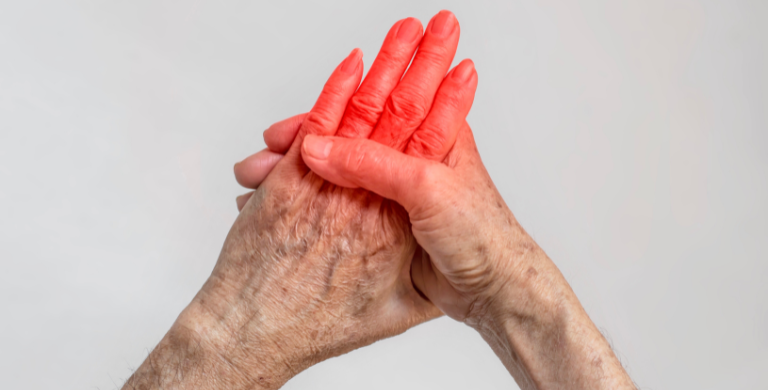Waking up with stiff joints and persistent fatigue can be more than just signs of a restless night; they might indicate an underlying health issue. Rheumatoid Arthritis (RA) is a chronic autoimmune disorder that not only affects joints but can also impact various systems in the body. Recognising the signs early and seeking appropriate care can make a significant difference in managing the condition and maintaining a good quality of life.
What is Rheumatoid Arthritis?
Rheumatoid Arthritis is an autoimmune disease where the immune system mistakenly attacks the body’s tissues, primarily targeting the synovium. This is the lining of the membranes surrounding the joints. This leads to inflammation that can cause joint damage and deformities over time. Unlike osteoarthritis, which results from wear and tear, RA affects the lining of the joints, leading to painful swelling and potential joint erosion.
Symptoms of Rheumatoid Arthritis
RA symptoms can vary in severity and may come and go. Common symptoms include:
- Joint pain, tenderness, swelling, or stiffness lasting for six weeks or longer.
- Morning stiffness lasting 30 minutes or longer.
- More than one joint is affected, especially small joints in the hands, wrists, and feet.
- The same joints on both sides of the body are affected.
- Fatigue, low-grade fever, and weight loss.
It’s important to note that RA can also affect non-joint structures, leading to complications in the skin, eyes, lungs, heart, and blood vessels.
Causes and risk factors:
The exact cause of RA is unknown, but several factors may contribute to its development:
- Genetics: A family history of RA increases the risk.
- Gender: Women are more likely to develop RA than men.
- Age: RA commonly begins between ages 40 and 60.
- Smoking: Cigarette smoking increases the risk and severity of RA.
- Obesity: Excess weight can increase the risk of developing RA.
Diagnosis
Diagnosing RA involves a combination of methods:
- Medical history and physical examination: Assessing symptoms and joint function.
- Blood tests: Checking for markers like rheumatoid factor (RF) and anti-cyclic citrullinated peptide (anti-CCP) antibodies.
- Imaging tests: X-rays, ultrasounds, or MRIs to detect joint damage.
Early diagnosis is crucial to prevent irreversible joint damage and to initiate effective treatment strategies.
Treatment options
While there’s no cure for RA, treatments aim to control symptoms and prevent joint damage. Treatment plans are tailored to individual needs and may include:
- Medications:
- Nonsteroidal anti-inflammatory drugs (NSAIDs): Reduce pain and inflammation.
- Corticosteroids: Provide quick relief from inflammation.
- Disease-modifying antirheumatic drugs (DMARDs): Slow disease progression.
- Biologic agents: Target specific parts of the immune system.
- Therapies:
- Physical therapy: Improves joint flexibility and strength.
- Occupational therapy: Assists in performing daily tasks with less strain.
- Surgery:
- In severe cases, procedures like joint replacement or tendon repair may be necessary.
Lifestyle and home remedies
Managing RA also involves lifestyle adjustments:
- Regular exercise: Low-impact activities like walking or swimming can improve joint function.
- Healthy diet: Eating anti-inflammatory foods may help reduce symptoms.
- Stress management: Techniques like meditation can alleviate stress-related symptom flare-ups.
- Adequate rest: Ensures the body can repair and reduce fatigue.
Taking the next step
Living with Rheumatoid Arthritis can be challenging, but with the right support and treatment plan, many individuals lead active and fulfilling lives. If you’re experiencing symptoms or have concerns about joint health, find a healthcare provider and book an online consultation today. Early intervention can make all the difference.












